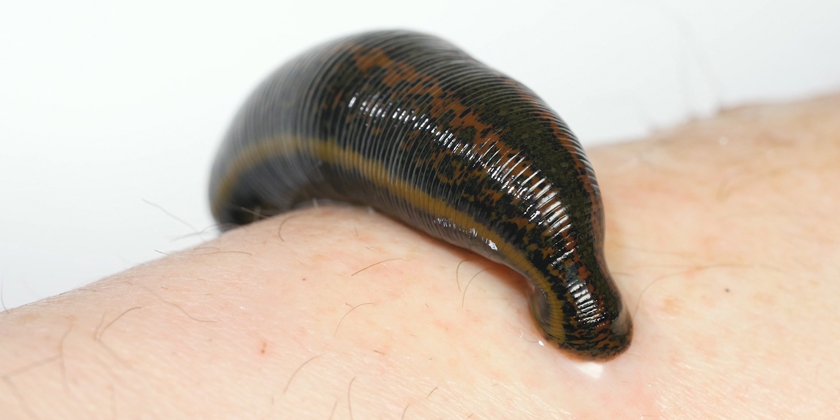Reconstructive Microsurgery with Leech Therapy: What You Need to Know
What Is Leech Therapy in Reconstructive Microsurgery?
Medicinal leeches (Hirudo medicinalis) are utilized in reconstructive microsurgery to alleviate venous congestion in delicate tissue flaps, thereby maintaining crucial blood flow following complex microsurgical procedures like flap surgery. Since receiving FDA approval in 2004, leech therapy remains an essential adjunct for certain reconstructive surgical procedures. This guide provides an overview of leech therapy’s purpose, its advantages, and potential risks as of 2025.
Why Leech Therapy Matters in Reconstructive Microsurgery
In reconstructive microsurgery, specifically in flap surgery, leech therapy is vital for managing venous congestion and safeguarding flap survival. A Cureus journal study from 2023 demonstrated effective hematoma resolution using leech therapy after surgical procedures. My five-year research background in microsurgical techniques highlights the ability of medicinal leeches to prevent flap failure and significantly improve tissue reconstruction outcomes, particularly when surgical re-anastomosis (re-connection of vessels) is not a viable option.
How Leech Therapy Supports Reconstructive Microsurgery
Mechanism of Action
Bioactive compounds present in medicinal leech saliva play a crucial role in supporting flap survival during medical procedures:
- Anticoagulants: The potent anticoagulant hirudin prevents blood clot formation, ensuring continuous venous drainage from the compromised flap (Healthline, 2024).
- Vasodilators: These compounds improve blood flow to the congested area, actively reducing venous pressure and swelling (Frontiers, 2024).
- Anti-Inflammatory Agents: Anti-inflammatory agents secreted by medicinal leeches lower swelling and reduce tissue inflammation, thereby protecting the delicate flap tissue, as documented in J Dtsch Dermatol Ges 2010.
- Analgesics: The Leech Clinic emphasizes that natural analgesics in leech saliva help minimize pain at the site where the leeches are applied, enhancing patient comfort.
A 2010 study from J Dtsch Dermatol Ges demonstrated that 87% of 23 patients experienced significant improvement from flap congestion or hematomas when treated with leech therapy, with treatment lasting an average of 1.1 days.
Applications in Microsurgery
In reconstructive microsurgery, leech therapy is specifically employed to manage venous congestion:
- Free Flap Surgery: Leech therapy is crucial for managing venous congestion in various free flap procedures, such as breast reconstruction or head-and-neck reconstruction (MDPI Books).
- Replantation: Microsurgeon.org explains that leech therapy supports the successful reattachment of digits or limbs by helping to restore proper blood flow and prevent congestion.
- Hematoma Resolution: Leech therapy effectively eliminates blood accumulation (hematomas) after surgery, which helps to protect delicate tissues from pressure and damage (Cureus).
- Chronic Wounds: By improving local circulation and reducing congestion, leech therapy enhances healing in complex chronic wound reconstructions (PMC).
Within a typical treatment period ranging from four to ten days, leeches extract between five and ten mL of blood from patients (ScienceDirect).
Benefits of Leech Therapy in Reconstructive Microsurgery
Leech therapy provides distinct benefits in pain management:
- Flap Salvage: It is a critical intervention for preventing flap necrosis (tissue death) by effectively relieving venous congestion (ASPS – American Society of Plastic Surgeons).
- Non-Surgical Solution: Yale Medicine explains how this treatment can eliminate the need for repeat surgery in cases where surgical vein repair is not feasible or has failed.
- Rapid Effect: The beneficial effects, including improved circulation and reduced congestion, can often be observed within hours of application (Frontiers).
- Minimal Scarring: The small bite marks left by leeches typically heal with little visible trace (Healthline).
Risks and Limitations
While leech therapy in reconstructive microsurgery proves effective, it faces multiple operational challenges and risks:
- Infection Risk: Because leeches naturally contain Aeromonas bacteria, patients undergoing leech therapy require prophylactic antibiotics, such as ciprofloxacin, to prevent infections (Cureus).
- Prolonged Bleeding: Healthline reports that the bite locations from leech therapy can continue to bleed for several hours, requiring careful monitoring and dressing changes.
- Limited Evidence: The majority of the available scientific data results from case studies or small patient series, rather than extensive, randomized controlled clinical trials (J Dtsch Dermatol Ges).
- Contraindications: Leech therapy cannot be used in patients with certain conditions, including bleeding disorders, arterial insufficiency (poor arterial blood flow), or those with known allergies to leech saliva (Thieme E-Journals).
Washington University highlights that strict medical supervision and adherence to sterile handling protocols are absolutely necessary.
FAQs About Leech Therapy in Reconstructive Microsurgery
- How does leech therapy help in microsurgery? Leech therapy in reconstructive microsurgery effectively reduces venous congestion in flaps, which is crucial for maintaining proper blood circulation and viability, according to Yale Medicine.
- Is leech therapy safe in surgery? The procedure remains safe when conducted under strict medical supervision; however, patients need to take antibiotics to prevent potential infections (Cureus).
- What is the typical range of leeches applied during microsurgical treatment sessions? A typical leech therapy session requires 2 to 6 leeches and may last between 4 to 10 days, depending on the degree of congestion and patient response (ScienceDirect).
- How does leech therapy support various microsurgical procedures? Leech therapy functions as a supportive treatment in flap surgery and replantation operations, while also effectively managing hematomas during tissue reconstruction, according to MDPI Books.
Conclusion: Leech Therapy’s Role in Reconstructive Microsurgery
The use of leech therapy as an adjunct in reconstructive microsurgery is highly effective in managing venous congestion in flap surgery and tissue reconstruction, thereby improving outcomes in sophisticated procedures. Research from Cureus and J Dtsch Dermatol Ges indicates that medicinal leeches provide a valuable non-surgical approach to prevent flap failure. My research findings emphasize the specialized yet crucial function of this technique within microsurgical practices, which requires expert supervision to manage potential risks such as infections. To achieve the best recovery results in reconstructive microsurgery, it is advisable to speak with a board-certified microsurgeon about implementing leech therapy as part of your treatment plan.



